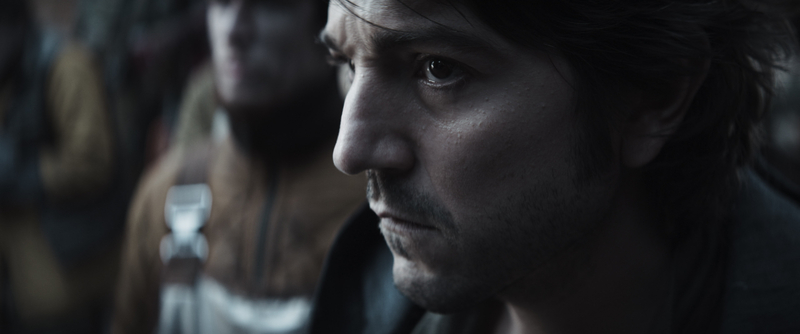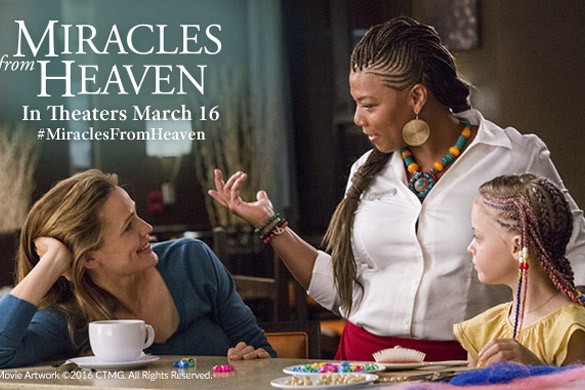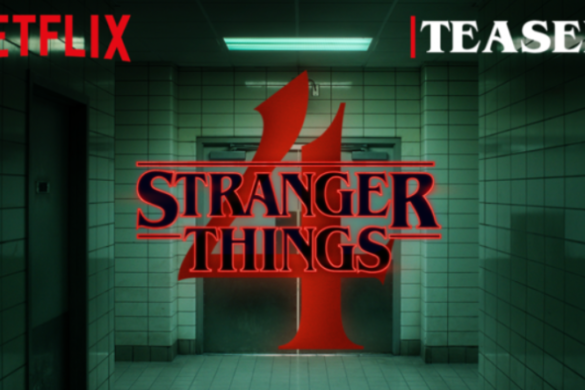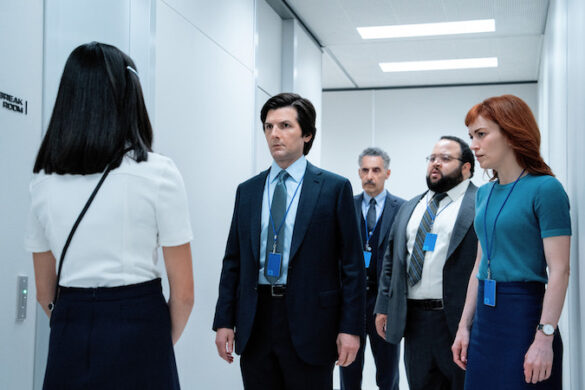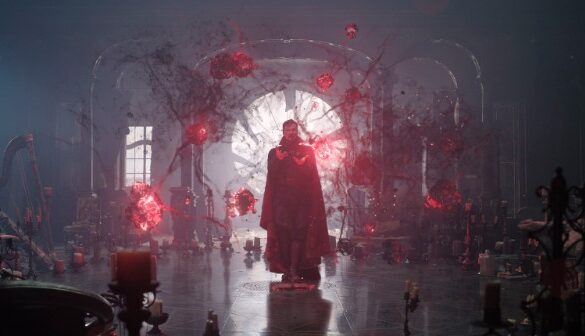“Andor” doesn’t pretend to be anything but a dark, gritty espionage thriller set within the Star Wars universe. By distancing itself from the stories of the Jedi, the series becomes more grounded and has resonating themes of fighting oppression and believing in the cause while also revealing the shades of grey and changing moral compasses. What’s more, it provides a new perspective. One that’s rarely explored and yet a near accurate reflection of the world we live in today. Rich in its diversity, politically selfish, and remembering what matters most, “Andor” is a refreshing change of pace for Star Wars that’s filled with fantastic character arcs, great set pieces, resonating themes, and an epic sound unlike any other.
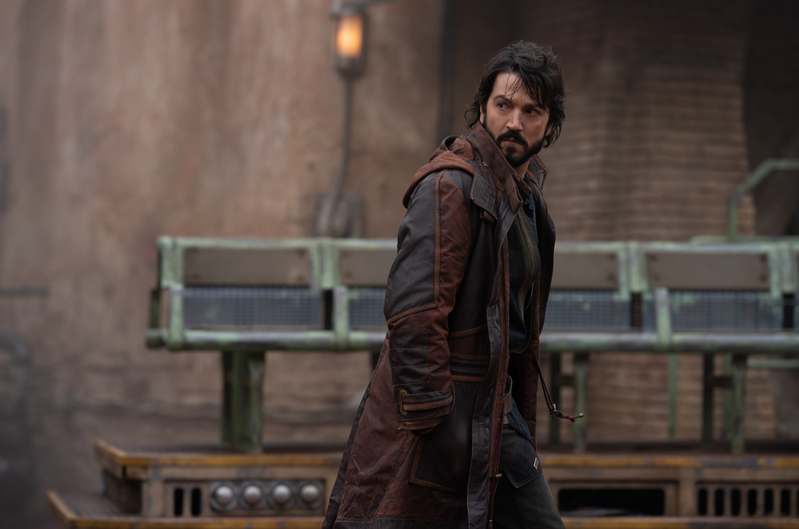
Unlike the episodic films of the Skywalker Saga, “Andor” doesn’t require any prior knowledge of the Star Wars universe. Set five years before the events of “Rogue One: A Star Wars Story,” the series follows Cassian Andor (Diego Luna), a con artist who is on his way to becoming a part of something bigger. Something that could hit the Empire where it hurts. He just doesn’t know it.
So one doesn’t have to have prior knowledge of the Star Wars lore or even be a fan of the films to be fully engaged in a galaxy far, far away that’s filled with the kind of political allegory that reflects the world we live in today. These episodes spend a lot of time reacquainting the audience with Andor while also devoting their time to revealing the state of the galaxy.
That’s because the galaxy wasn’t what it used to be. Now ruled by the Galactic Empire, which rules with oppression in the name of peace, the galaxy is filled with spies, assassins, saboteurs, and greedy and corrupt politicians. It gets into who Andor is and his place before he becomes the spy and soldier of the Rebellion. He’s a con artist who has many debts. But it’s not out of self-interest. And true to the spy and espionage thriller, the series is filled with characters who don’t trust each other but have no one else to rely on.
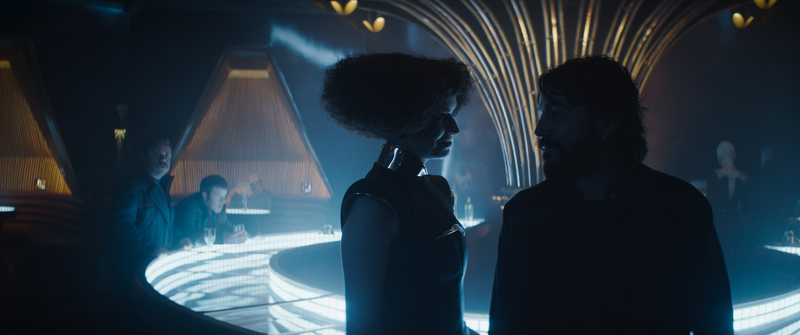
Though the three episodes are a slow burn, they are a means to introduce characters and relationships in ways that only could work in a long-form series. And because of who Cassian is, his relationship with his adoptive Maarva (Fiona Shaw), his old but very loyal droid, B2EMO, and his best friend Bix (Adria Ajorna) are all the more complicated. Maarva is very protective of Cassian, whom she saved on the planet Kenari after she found him in a crashed Imperial ship. As for his relationship with Bix, that’s harder to understand. However, based on the tone of their conversations, we know that they have a history, one that is wrought with Cassian constantly leaving her and expecting that things have not changed whenever he returns. He has a way with words and uses that to his advantage to get out of dangerous situations. However, he is ruining his health and reputation by hanging out with friends of low character and could get himself into trouble he could not talk himself out of.
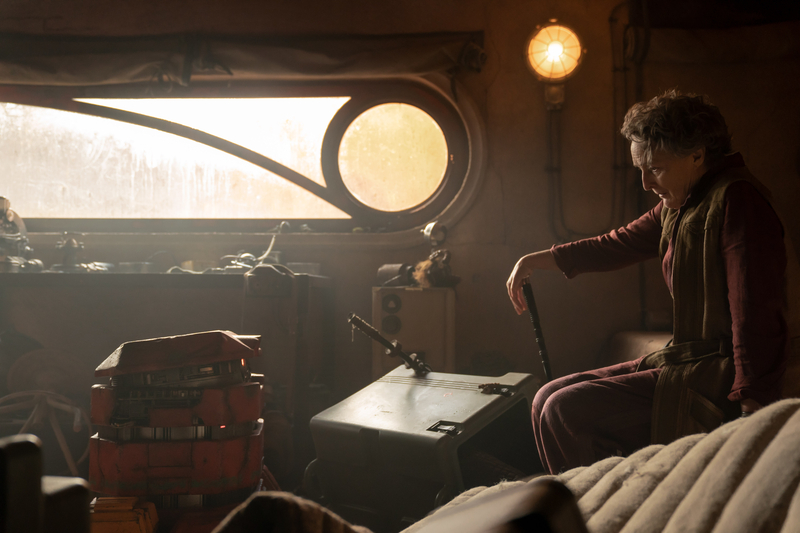
That danger becomes all the more real when two Pre-Morofficers harass Cassian after they are insulted at a seedy establishment. An accidental headbutt results in one death, while the other begs Cassian to spare his life. He doesn’t oblige and is now on the run. The murders then catch the attention of Syril(Kyle Soller), a deputy inspector looking to move up the ranks when his lazy captain leaves him in charge to take care of an Imperial assessment. Seeing his superior’s absence as an opportunity to prove himself to Corpos, Syril orders officers to look for a dark-skinned male asking about a Kenari girl. And their search eventually leads them to Cassian, a Kenari male resident of Ferrix.
With the alert on Cassian, everyone close to him is now in danger of being arrested for harboring the murder suspect. This includes Maarva, who experiences Syril using excessive force by forcibly entering her home and trashing it to find any clues about Cassian’s whereabouts. Meanwhile, the city itself unite by banging on metal sheets to alert others to close their windows, lock their doors, and hide from Corpos. Though the sounds frustrate Syril, he is told that they are meant to intimidate and are nothing more than bluster. But we all know better than that.
So much of the first three episodes revolves around the idea of who can any of these characters trust. Cassian, already having a sullied reputation and in debt, needs Bix to fence a valuable Imperial starpath unit. The item is enough to get him off the planet and start a new life elsewhere. But it’s Luthen (StellanSkarsgård), Bix’s client, who proves to be of interest, considering that he doesn’t want to buy what Cassian is selling but instead wants to recruit him to his team of rebels. But before the exchange could take place, they traded words to get the other to reveal who they are. But it’s Luthen who has the advantage as he has been playing duplicitous games a lot longer than his opponent.
The scene between the two eventually leads to one of the more extensive action sequences of the four episodes. Cassian and Luthen escape a scrap yard hanger where various engines hang above them. Held up by a few chains, they exchange gunfire with the Corpos. A few perfect shots and well-placed detonators knock it all loose, which helps with their escape.
Eventually, the clanging sounds in Ferrix become silent, which frightens the Corpos officers. “That’s what a reckoning soundslike,” Maarva warns. And that’s when we see how strong of a unit the city is as their contingency plans and other insurances are triggered. All of that makes Syril and the rest of the Corposlook incompetent.
But in between all of that chaos, we see how Corpos abuse their authority and power by assaulting Bix for simply running away from them. Once again, the scene itself is reminiscent of how marginalized people react to the police force and how they are treated when they have their hands up. The brutality of the scene when Bix’s head is slammed against the wall to her being handcuffed without anyone treating her open wound. It’s certainly a scary notion considering how much we saw that under certain political administrations.
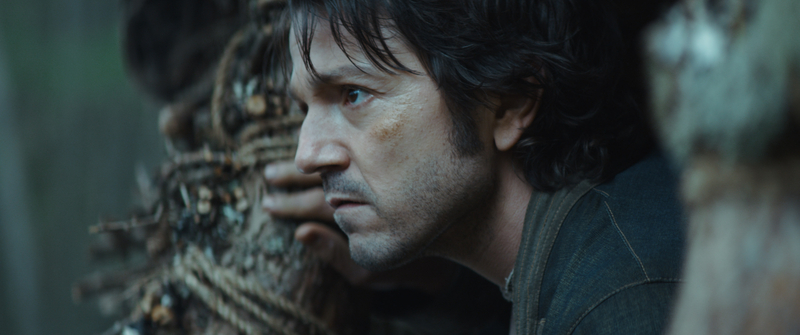
Without going any further into spoiler territory, episode 4 sees Andor receiving a less than lukewarm welcome to the team. Joining under the pretense that it is to steal from the Imperial payroll, Cassian learns that they have to hit an imperial garrison and outrun their tie fighters as they escape. Not an easy job with the equipment they have. But something that can be done because the Empire believes no one is crazy enough to steal from them.
Episode 4 also explores the political infighting that takes place within the Empire, the family dynamics in Syril’s return home to his mother after a devestating failure on Ferrix, and gets deeper into the themes of who can a person trust in an age where spies, assassins, saboteurs, and corrupt politicians thrive.
Aside from the political allegories, “Andor” also addresses the socioeconomic disparities that exist within the galaxy. The dark and gritty planet of Ferrix is reminiscent of a mining town where its strength is in its community. Everyone knows each other and supports each other. The city itself is almost always bustling as scrappers have to make quotas and deliveries are made on time. Contrast that to Corrousant, where is gleaming cleanliness is more of a façade and is juxtaposed with the kind of filthy corruption of the government and the evils of the Empire – whose security division works under the guise of healthcare by They identity the symptoms and treat the sickness. Locate the germs from within or the outside. Because the longer they wait to identify the disorder, the harder it is to treat the disease.
Aesthetically, this is a wholly unique side to Star Wars that we rarely ever see. For the most part, we spend a majority of the first four episodes in Ferrix. The tangibility to these sets and practicality to many of the props add to the realism of Tony Gilroy’s human stories. So while “Andor” is set in a galaxy far, far away, it still grounded by those resonating themes. It never tries to be anything else but that and doesn’t concern itself by filling its world with Jedis, Sith, scoundrels, and princesses. As such, the show forges its own identity to tell its own story but still manages to utilize the Star Wars mythology to make it entertaining.
The unfortunate part of a show like “Andor” is that there is little to no room for surprises, considering that we know how it will all end. So while there are a few winks and nods to the Star Wars lore, like Genevieve O’Reilly reprising her role as Mon Mothma, “Andor” will almost be an original story as it explores the title character’s journey to becoming a rebel who helps steal the plans to the Death Star.
But the stakes and consequences are very different and provide a new perspective on the Star Wars universe. For one thing, we see a human story of people trying to live under authoritarian oppression. Another aspect is how Mon Mothma works to provide for those who have been negatively affected by the colonization and politics of the Galactic Empire. So while audiences and fans may be dealing with new characters and a different kind of story, Andor is a thrilling and fully engaging gateway to those who are unfamiliar with Star Wars mythology.
9/10
The first season of Andor is scheduled to premiere on Disney+ on September 21, 2022,

